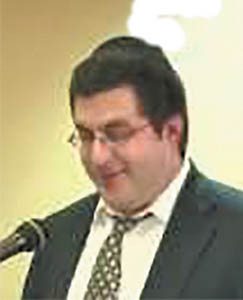
Being a scientist isn’t easy. Scientists toil away night and day with no reward, except for award ceremonies. But not every scientist can win the Nobel Prize. Sure, there’s also the knowledge that they’re making the world a better place, but not all scientists are out there curing diseases. Some are out there finding new ways of curing meat. So there’d better be an award.
And there is! Every year there’s an Ig Nobel Prize Ceremony, which celebrates research that, when a scientist first explains it to you, sounds silly, and only when he sits down and elaborates on the full extent and application of his research does he begin to realize that you’ve left the room.
For example, this year, the Ig Nobel prize for Physics went to a bunch of researchers in Japan for, quote, “measuring the amount of friction between a shoe, a banana peel and the floor.” Because apparently, all of Japan is one big cartoon.
To be honest, when I was growing up, I was led to believe that randomly tossed banana peels would be a bigger hazard in life than they actually are. They’re probably more of an issue if you work somewhere where there are just piles of banana peels lying around, such as wherever they make yellow Laffy Taffies.
To conduct the study, volunteers walked across rooms littered with banana peels until they slipped, and then the scientists watched the footage over and over again in slow motion. They then compared the results to apple and orange peels, which you’d think would be scientifically unsound. They also attempted the experiment on carpeting, until their wives found out.
But sometimes you have to put people through pain in the name of science. For example, the prize for Art this year went to a group of scientists in Italy for, quote, “measuring the relative pain people suffer while looking at an ugly painting rather than a pretty painting while being shot by a powerful laser.”
Boy, that sentence took a left turn at the end there.
It turns out, scientists found, that you experience more pain if you’re looking at the ugly painting. So when you’re in the doctor’s office, getting a shot, and the doctor tells you to look away, so you look at the posters on his wall that show, in vivid detail, a cutaway of the human body, and despite you doing that, the shot still hurts, you know why. So these scientists want to argue that, for example, hospitals should make an effort to be more beautiful, rather than being full of sick people and their relatives.
And speaking of watching where you’re going, the prize for Public Health this year went to a team of scientists, “for investigating whether it is mentally hazardous for a human being to own a cat.”
Maybe. If you think about it, there seems to be a direct correlation between how many cats people own and how crazy they are.
So, for example, those people who own 17 cats? They didn’t buy 17 cats at once. They got one cat, and then they suddenly started thinking, “Let’s get a second.” Then there were even more cat fumes in the air and they were like, “Let’s get a third.”
(And when I say, “Let’s get another cat,” I don’t mean “let us.” If you have 17 cats, there is no “us.” Unless you mean “me and the cats.”)
Of course, if you want evidence that cats create mental problems, you need look no further than the internet. Also ancient Egypt.
Meanwhile, the prize for Neuroscience went to Chinese scientists Jun Li, Lu Feng, Ling Li, Kang Lee and Jiangang Liu for trying to understand why people see faces in objects that don’t technically have faces, such as electrical outlets, bowling balls and bathtub faucets. For example, a lot of non-Jews have claimed to see the face of Yoshke in their toast over the years, because apparently that’s how Yoshke communicates with crazy people in the morning before they’ve had their coffee.
But what Li, Lu, Li, Lee and Liu discovered was that this is all due to something called face pareidolia, which means that we have an innate ability to recognize facial features, which is great, because otherwise we’d end up having extended conversations with the backs of people’s heads. This is also the science that makes emojis possible. For example, look at this sideways:
🙂
That was nothing but a colon and a closing parenthesis, but if you turned the paper in the right direction, you saw a smiling face. If you didn’t, you saw two eyes and a unibrow.
Meanwhile, the prize for Psychology went to scientists from Australia, the US and the UK, “for amassing evidence that people who stay up late are, on average, more psychopathic than people who arise early in the morning.”
Apparently, this was based on a study in which early risers said, “Good morning,” and the late sleepers replied by growling at them.
Also, most criminals are night people. It’s not like these guys get up really early in the morning, go for a jog, have a healthy breakfast and then say, “Ok, the bank opens at 9. I want to be there before the crowds. Let’s go, so we can get back.”
But staying up late doesn’t mean we’re psychopaths. The study just says that we’re more psychopathic. Like on a scale of 1 to 10, with 10 being the kind of person who sends test subjects back and forth through a room full of banana peels.
By Mordechai Schmutter
Mordechai Schmutter is a freelance writer and a humor columnist for Hamodia, The Jewish Press and Aish.com, among others. He also has five books out and does stand-up comedy. You can contact him at [email protected].













